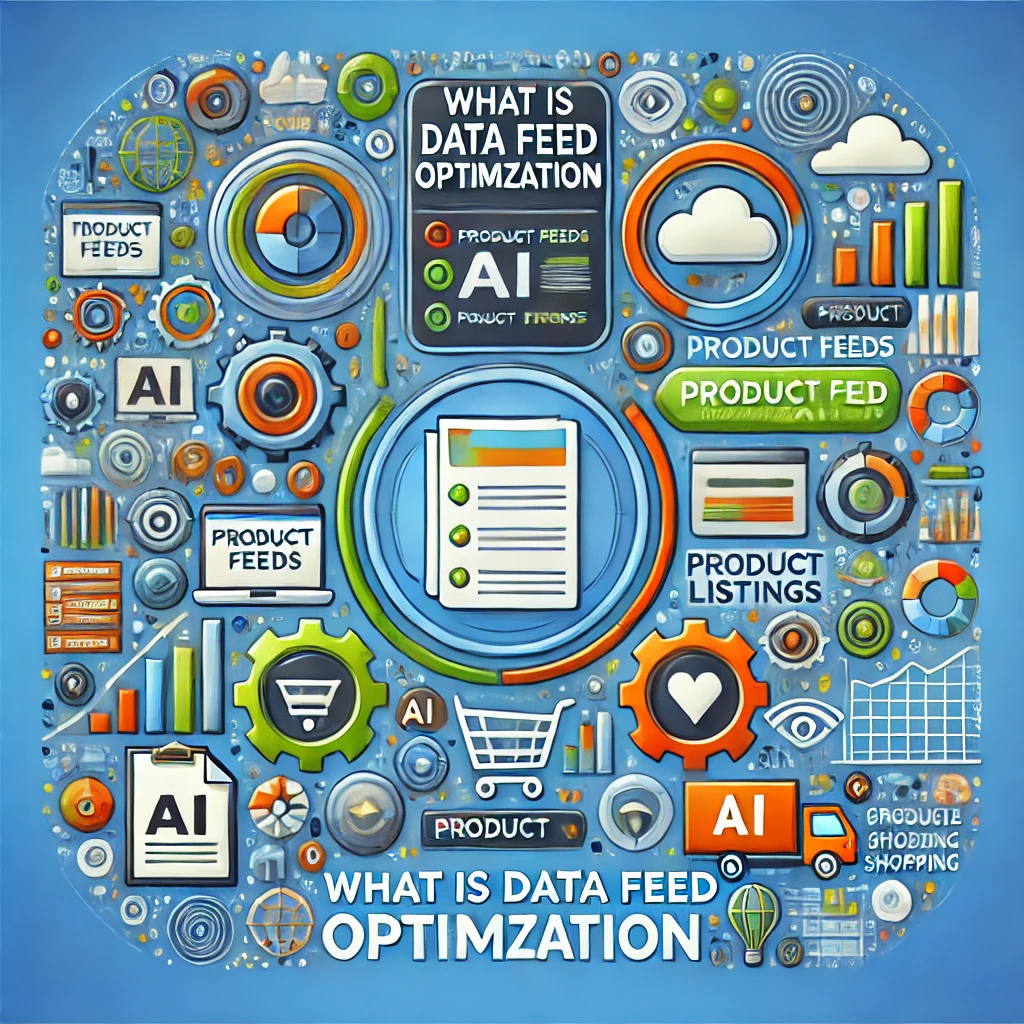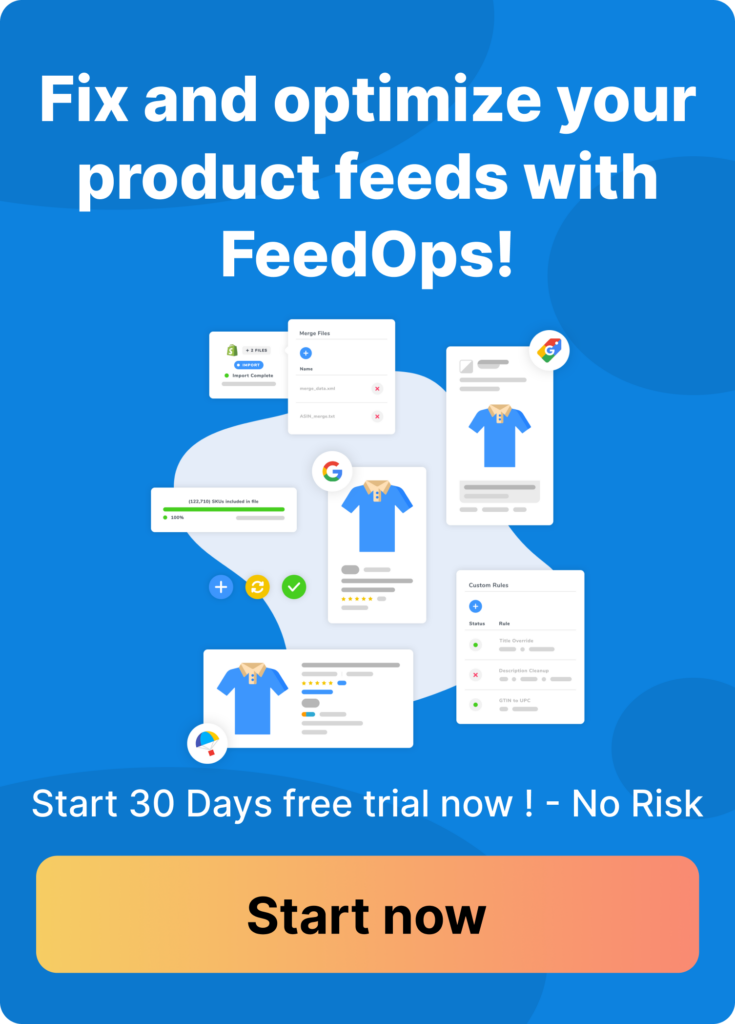What is Data Feed Optimization?
What is Data Feed Optimization and Why It’s Essential for Ecommerce Success? In today’s fiercely competitive ecommerce landscape, simply connecting your product data to platforms like Google Shopping is no longer enough. While many ecommerce marketers understand how to link their product data to these platforms, the real challenge lies in data feed optimization—the key to unlocking higher visibility, relevance, and conversions.
Whether you’re a seasoned ecommerce professional or just starting, understanding what is data feed optimization and how it impacts your business is critical. It involves more than just uploading your product data; it’s about refining, enhancing, and optimizing that data to ensure it reaches the right audience in the most effective way possible.
The Critical Difference: Connecting vs. Optimizing Product Data
Connecting your product data to a channel like Google Shopping is like getting a seat at the table, but it doesn’t guarantee that you’ll stand out or be heard. This is where data feed optimization comes into play. What is data feed optimization? It’s the process of fine-tuning your product data before it’s sent to ecommerce platforms to ensure that your products are displayed in the most effective way possible. Without optimization, your products may simply exist without driving the results you want—traffic, conversions, and a strong return on investment (ROI).
When you optimize your product data, you transform it from being merely present to becoming a powerful tool that drives relevant traffic, increases conversions, and boosts sales. Data feed optimization helps ensure your product listings are aligned with the search terms your target audience is using, increasing the chances of your products being found by the right customers.
Why Data Feed Optimization is Critical in Ecommerce

Here’s why data feed optimization is crucial for ecommerce success:
- Better Visibility: When your product data is optimized, your products are more likely to appear in search results when customers are searching for specific products or keywords. This enhanced visibility can dramatically increase the chances of your products being seen by potential customers.
- Improved Relevance: Optimizing product titles, descriptions, and attributes makes your listings more relevant to what potential buyers are searching for. With highly relevant product data, you’ll attract the right traffic—those who are actively looking to purchase what you offer.
- Higher Conversion Rates: Well-optimized product data doesn’t just drive more traffic; it drives the right kind of traffic. When the information you provide matches the search intent of your customers, you’re more likely to convert clicks into sales.
- Better ROI on Ad Spend: Without data feed optimization, your ad spend could be wasted on irrelevant clicks or misaligned audiences. By providing accurate and detailed data, you allow platforms like Google Shopping and Performance Max (PMax) to target your ads more effectively, maximizing your ROI.
- Avoiding Common Pitfalls: Many businesses fail to realize the importance of maintaining their product data over time. Stale, incomplete, or inaccurate product information can hurt your ecommerce efforts. Ongoing data feed optimization ensures that your product listings are always up-to-date and aligned with current search trends.
The Role of AI in Ecommerce: Why Optimized Feeds Matter More Than Ever
As digital marketing increasingly leans on artificial intelligence (AI) for ad placement and targeting, the need for data feed optimization becomes even more critical. AI-powered tools like Google’s Performance Max campaigns rely heavily on the quality and accuracy of your product data to deliver effective ads.
So, what is data feed optimization in the context of AI? It’s about giving AI the right tools—clean, well-structured, and optimized product data—to ensure that your ads are shown to the most relevant audience at the most opportune moments. If your product data is incomplete, outdated, or poorly optimized, AI won’t be able to properly assess and target the right customers, leading to wasted ad spend and missed opportunities.
How AI and PMax Blur the Line Between Sales and Advertising
Google Performance Max (PMax) campaigns have revolutionized how businesses approach digital marketing. PMax blends sales-driven tactics with brand awareness strategies, leveraging AI to dynamically shift between audiences, channels, and ad formats based on real-time performance.
However, without data feed optimization, AI struggles to accurately position your products. For example, dynamic remarketing relies on accurate product data to retarget potential customers with personalized ads, driving them closer to conversion. But PMax also uses the same data for broader brand-building efforts. Without well-optimized feeds, you may lose the precision and effectiveness required for both short-term sales and long-term brand growth.
Key Elements of Data Feed Optimization
Now that you understand what is data feed optimization, it’s important to dive deeper into the specific elements that make it so powerful for ecommerce success:
- Product Titles: Your product titles should be optimized with the most relevant keywords and structured in a way that’s easy for both search engines and customers to understand. Include the brand name, product type, and key attributes that differentiate your product.
- Product Descriptions: Detailed and optimized descriptions provide the essential information customers need to make informed purchase decisions. Descriptions should highlight key benefits, features, and use cases, all while including relevant keywords.
- High-Quality Images: While images may not seem like part of data optimization, they are crucial to conversions. High-quality, clear images that showcase the product from multiple angles can significantly improve engagement and drive sales.
- Product Attributes: Providing accurate attributes like color, size, material, and availability is critical to product data optimization. These details help search engines categorize and display your products in relevant searches, ensuring better visibility.
- Error-Free Feeds: Ensure your product feed is free of errors or missing information. Platforms like Google Merchant Center flag errors, which can prevent your products from showing up in search results. Regular audits and corrections are necessary to maintain the quality of your feed.
Conclusion: The Long-Term Benefits of Data Feed Optimization
What is data feed optimization? It’s the strategic process of refining and enhancing your product data to improve the performance of your ecommerce campaigns. While connecting your product data to platforms like Google Shopping is the first step, optimizing that data is what truly sets you apart in a crowded marketplace.
As AI continues to shape the digital marketing landscape, data feed optimization will become even more crucial for ecommerce success. From increasing visibility to improving conversion rates and maximizing ROI, the benefits of well-optimized product feeds are undeniable.
For those ready to take their ecommerce strategy to the next level, focusing on data feed optimization is a must. Stay ahead of the competition by continuously refining your data, and you’ll reap the rewards in both the short and long term.
To keep learning about what is data feed optimization and how it can help your business thrive, sign up for our newsletter or follow FeedOps on LinkedIn for the latest insights, tips, and strategies in the ecommerce world.



